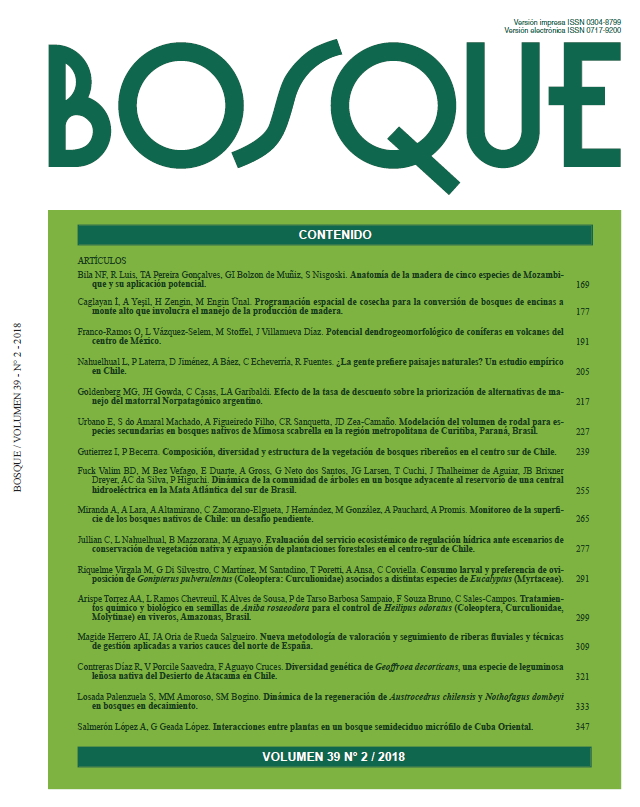Modeling of the stand volume for secondary species in native bracatinga forests in the metropolitan region of Curitiba, Paraná, Brazil
Main Article Content
Abstract
Forest formations known as bracatingais - bracatinga forest - were initially composed only by the Mimosa scabrella – bracatinga – which, over the years, has been being replaced by several secondary species. The wood produced in these bracatingais is mainly sold for firewood and charcoal, being an important source of income for the small owners of this region. To facilitate the quantification of volumetric wood production, the objective of this work was to model the volume of firewood with bark per unit of area for the other hardwood species of the bracatingais. The data base comes from 320 plots measured in stands with ages varying from 3 to 20 years, measured between 1996 and 2011 in several municipalities of the metropolitan region of Curitiba. In these plots were measured in all the trees, with at least 5 cm in diameter, the variables total height and diameter at breast height. The individual volume of each tree in each plot was estimated using equations adjusted for similar forest formations. Twenty nine forest models selected from the forest literature, plus one arithmetic and one logarithmic, were adjusted by the forward stepwise process. The logarithmic equation adjusted by the forward stepwise process was the one with the best overall performance, with coefficient of determination adjusted of 0.992 and standard error of 10.17 %, which has no correlation among the residues by the Durbin Watson test and which was validated and
considered suitable for estimating the volume per hectare of the hardwood species of bracatingais.

